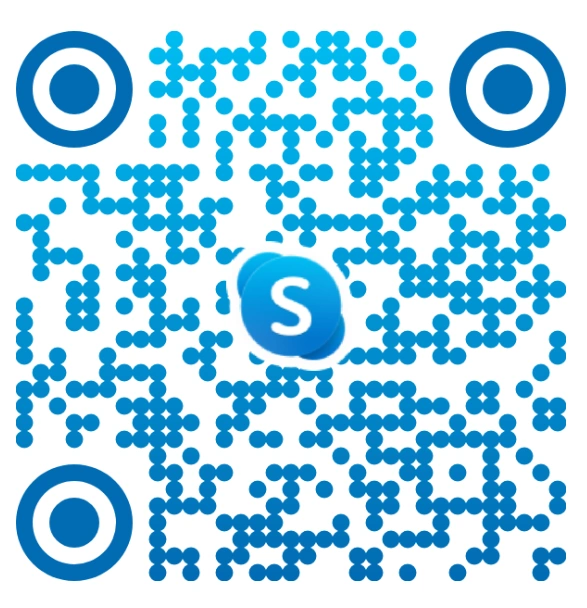Fine-Tuning Large Language Models (LLMs) in 2025: Tools, Trends, and Business Applications
Introduction
Did you know that over 75% of enterprises in 2025 are integrating large language models (LLMs) into their AI strategies, yet only small firms are achieving measurable success? That’s because many rely on out-of-the-box models that aren’t optimized for their domain or data. The key to unlocking true business value lies in fine-tuning LLMs. Whether it’s LLaMA 3, Mistral, or another open-source foundation model, fine-tuning enables organizations to tailor LLM behavior to specific use cases, goals, and language patterns.
The landscape of LLM fine-tuning has evolved rapidly. New frameworks, parameter-efficient methods, and community-driven tools have made it easier for teams to adapt large models to their operational needs. Organizations are now fine-tuning LLMs not only in large-scale data centers but also on consumer hardware, thanks to advances like QLoRA and Axolotl fine-tuning. These developments are accelerating the adoption of domain-specific LLM fine-tuning across industries.
This blog explores the top tools, trends, and techniques for fine-tuning large language models in 2025. Learn how methods like LoRA and adapter-based tuning help businesses build smarter, personalized AI solutions using their own data.
What Is Fine-Tuning in Large Language Models?
Fine-tuning is the process of adapting a pre-trained large language model (LLM) to perform better on a specific task or within a particular domain. While the base model has already learned how language works from massive datasets, fine-tuning allows businesses to customize that knowledge using their own data. This approach improves relevance, accuracy, and user alignment—essential for use cases like healthcare, legal, finance, or customer service.
By training the model on curated examples, organizations can develop more focused, efficient, and controlled AI behavior. This approach to AI model training gives you a head start—fine-tuning an LLM that already understands language structure and adapts it to your specific context.
Fine-Tuning vs Prompt Engineering
Both fine-tuning and prompt engineering aim to improve model performance, but they work differently. Prompt engineering modifies the input, while fine-tuning modifies the model. Here’s a quick comparison:
| Feature | Fine-Tuning LLMs | Prompt Engineering |
| What It Does | Updates model weights using custom training data | Design specific prompts to guide model output |
| Control Over Output | High – can deeply align the model to business goals | Moderate – dependent on prompt design |
| Use Case Suitability | Ideal for complex, domain-specific tasks | Best for quick testing or general-purpose tasks |
| Resource Requirement | Moderate to high (depends on method and data size) | Very low – no retraining needed |
| Scalability & Consistency | Strong consistency over repeated use | Less consistent – may vary with phrasing |
Pretraining vs Fine-Tuning
It’s also important to understand how fine-tuning compares to pretraining. Pretraining is done on massive datasets and requires enormous resources. Fine-tuning, in contrast, is focused and cost-effective.
| Feature | Pretraining | Fine-Tuning LLMs |
| Purpose | Teaches general language understanding | Adapts to specific tasks or domains |
| Data Volume | Billions to trillions of tokens | Thousands to millions of tokens |
| Cost & Compute | Extremely high – done by major AI labs | Much lower – achievable with smaller setups |
| Who Performs It | AI labs (e.g., OpenAI, Meta, Google) | Enterprises, researchers, startups |
| Model Outcome | General-purpose foundation model | Task-specialized, domain-adapted model |
Types of Fine-Tuning Approaches in 2025
In 2025, fine-tuning large language models has become more accessible through a variety of methods. Each approach offers trade-offs in terms of control, cost, and performance depending on the business use case.
1. Supervised Fine-Tuning (SFT)
Supervised fine-tuning involves training a pre-trained model on labeled input-output pairs. It helps the model learn specific tasks with high accuracy and is widely used when structured, task-relevant data is available.
2. Full Model Fine-Tuning
This method updates all model parameters using new data, offering complete customization. While powerful, it requires extensive computational resources and is mainly adopted by enterprises or labs with large infrastructure.
3. Parameter-Efficient Fine-Tuning (PEFT)
PEFT techniques, such as LoRA and adapters, update only select parts of the model. This makes fine-tuning faster, cheaper, and achievable even on consumer hardware without compromising much on performance.
4. Instruction Tuning
Instruction tuning trains the model to better understand and follow natural language instructions. It enhances the model’s general usability and response alignment across various use cases, especially in conversational AI.
5. Domain-Specific Fine-Tuning
This approach customizes an LLM using industry-specific data like legal documents, medical records, or financial reports. It boosts accuracy, reliability, and compliance for applications in specialized business domains.
Top Tools & Frameworks for Fine-Tuning LLMs in 2025
These are the most widely used and trusted tools for fine-tuning large language models across research, enterprise, and production environments. Each brings unique advantages for different levels of customization and performance.
1. Hugging Face Transformers
The most popular open-source library for working with pre-trained models. It supports fine-tuning workflows from small-scale experiments to full production deployments.
Key Features:
- Offers thousands of ready-to-use models from the Hugging Face Hub
- Built-in support for LoRA, QLoRA, and full fine-tuning
- Works with PyTorch, TensorFlow, and JAX backends
- Seamless integration with tokenizers, datasets, and Accelerate
- Rich community support and regularly updated documentation
2. DeepSpeed (by Microsoft)
Designed for efficient training and fine-tuning of very large models. DeepSpeed reduces memory load and boosts training speed using advanced optimization techniques.
Key Features:
- Uses ZeRO optimization for efficient multi-GPU training
- Supports billion-parameter LLMs on limited hardware
- Compatible with Hugging Face and Megatron models
- Includes gradient checkpointing and mixed-precision training
- Enables cost-effective scaling across clusters
3. OpenLLM (by BentoML)
An open-source framework for serving and fine-tuning LLMs in production. OpenLLM helps teams streamline AI deployment, monitoring, and version control for custom models.
Key Features:
- Fine-tune and serve open-source LLMs using a unified platform
- Works seamlessly with BentoML for MLOps and API management
- CLI interface and YAML-based configuration for easy setup
- Integrated logging, metrics, and model lifecycle tracking
- Supports secure, cloud-native model deployment
4. LLaMA-Factory
Built specifically for fine-tuning LLaMA models, including LLaMA 2 and 3. It’s easy to set up and supports several tuning methods out of the box.
Key Features:
- Supports LoRA, QLoRA, instruction tuning, and quantization
- Lightweight framework with fast training on multi-GPU setups
- Works with LLaMA, Mistral, Baichuan, and other open models
- Offers a user-friendly YAML configuration system
- Ideal for research, experimentation, and production pipelines
5. Axolotl
A leading open-source tool designed for maximum flexibility in LLM fine-tuning. Axolotl is known for its stability, speed, and broad model compatibility.
Key Features:
- Supports supervised tuning, LoRA, QLoRA, and full model updates
- Works with Falcon, Yi, Mistral, LLaMA, and Pythia models
- YAML-based config system with reproducible pipelines
- Supports DeepSpeed, Flash Attention, and 4-bit quantization
- Trusted by the community for research and real-world applications
6. Unsloth
Focused on fast and memory-efficient fine-tuning, Unsloth is ideal for those training LLMs on consumer GPUs. It simplifies LoRA training with high performance.
Key Features:
- Faster than many traditional frameworks with low memory usage
- Optimized for 4-bit and 8-bit quantized models
- Compatible with Hugging Face Transformers and LoRA adapters
- Designed for laptops and low-resource environments
- Simple installation and easy-to-use training scripts
Also Read : Small Language Models (SLMs): Revolutionizing AI Integration and Automation
Advantages of Fine-Tuning LLMs for Businesses
Fine-tuning large language models is transforming how businesses create intelligent, industry-specific AI solutions. Let’s explore the key benefits driving this shift.
- Higher Accuracy: Fine-tuned models perform better on targeted tasks by understanding the context, format, and structure of domain-specific input and output data.
- Domain Expertise: Training with industry data helps models deliver expert-level responses tailored to legal, medical, financial, or other regulated business environments.
- Personalization: Custom-tuned LLMs adapt to a company’s tone, writing style, and customer behavior, improving user experience across support and content channels.
- Faster Response Time: Optimized fine-tuning techniques like QLoRA reduce latency, enabling real-time performance even on smaller, cost-efficient hardware setups.
- Cost Efficiency: Instead of building models from scratch, businesses save time and money by customizing open-source LLMs to fit their specific needs.
Trends Shaping LLM Fine-Tuning in 2025
Fine-tuning strategies are evolving quickly. These trends are making it easier, safer, and more efficient for businesses to customize LLMs.
1. LoRA Optimization
LoRA continues to be the most efficient method for fine-tuning. It allows smaller updates to the model using fewer parameters, reducing memory and compute requirements without sacrificing performance.
2. QLoRA Advancement
QLoRA builds on LoRA by supporting 4-bit quantized models. It allows fine-tuning large models on laptops or cloud VMs while saving memory, power, and storage without major accuracy loss.
3. Multimodal Training
Businesses are fine-tuning LLMs using text, image, and audio inputs together. With the help of AI automation services, this enables models to perform better in tasks involving documents, visuals, or voice-based interaction across workflows.
4. Synthetic Data Use
Synthetic datasets are being used to train models when real domain data is scarce, private, or costly to label. It enables faster prototyping and protects sensitive business information.
5. Open-Source Customization
Open-source models like LLaMA 3 are driving innovation. Developers can fully control training, performance tuning, and model behavior without depending on proprietary AI providers or closed ecosystems.
6. Ethical Fine-Tuning
Bias mitigation, fairness checks, and regulatory alignment are now built into fine-tuning pipelines to ensure responsible, transparent, and legally compliant AI behavior in business applications.
Also Read : How Large Action Models Are Redefining Enterprise Efficiency
Key Business Applications of Fine-Tuned LLMs
Fine-tuned LLMs help automate tasks, improve accuracy, and deliver faster AI solutions across key business functions. Let’s discuss the key applications.
1. Industry-Specific AI Assistants
Businesses in healthcare, finance, law, and retail are deploying fine-tuned AI assistants to automate workflows, answer domain-specific queries, and improve decision-making with expert-level precision and compliance.
2. Enterprise Chatbots and Virtual Agents
Fine-tuned chatbots understand product context, company tone, and customer history. With custom AI agent development, this results in more accurate answers, lower support costs, and better customer satisfaction in live chat environments.
3. Knowledge Base Search and Document Intelligence
LLMs trained on internal documents can summarize, classify, and retrieve relevant information from enterprise data, speeding up knowledge discovery, research, and internal workflows.
4. Personalized Customer Support
Models fine-tuned with CRM data and customer interaction logs deliver personalized responses, helping brands build trust and streamline interactions across email, chat, and ticketing systems.
5. Real-Time Translation and Summarization
Businesses use multilingual fine-tuned models to translate documents, summarize long content, and localize messaging—improving communication with customers, partners, and teams worldwide.
Challenges and Considerations in Fine-Tuning LLMs
While fine-tuning offers strong benefits, it also brings technical and strategic challenges that businesses must address to ensure success.
- Data Privacy and Compliance: Handling sensitive or proprietary data during training may raise legal, security, or industry-specific compliance risks.
- Cost and Infrastructure Requirements: Training large models can be expensive, requiring GPUs, cloud resources, and skilled engineering support.
- Catastrophic Forgetting and Drift: Fine-tuned models can forget original capabilities or shift outputs if not trained or monitored carefully.
- Evaluation and Benchmarking: Measuring model performance consistently across tasks, datasets, and objectives remains complex and resource-intensive.
- Limited Quality Training Data: Access to clean, labeled, and domain-specific data is often limited, impacting model performance and generalization.
Fine-Tuning Best Practices For Enterprises
To make fine-tuning effective and manageable in real-world scenarios, it’s important to follow some proven, focused practices.
1. Data Quality and Quantity
Your model’s performance depends on how clean and relevant your training data is. Use well-labeled, domain-specific examples that match real-world use cases. The better your input, the better your results.
2. Hyperparameter Optimization
Adjust learning rates, batch sizes, and training duration to find what works best. Small tweaks often lead to major improvements. Testing different setups helps avoid overfitting and underperformance.
3. Regular Evaluation
Monitor progress during training with a separate validation set. This helps you catch errors early and ensure the model learns what it’s supposed to. Evaluation should guide when to stop or adjust.
4. Start with a Proof of Concept
Don’t fine-tune everything at once. Begin with one high-value use case to test quality, feasibility, and ROI. With expert AI consulting services, this approach helps build trust before scaling up.
5. Use MLOps Tools
Tools like Weights & Biases or ClearML help track training, manage versions, and deploy smoothly. This makes collaboration easier and models easier to manage in production.
Also Read : The Future of Large Language Models: How to Choose the Right LLM for Your Business Needs
Which Strategy Works Best for Your AI Needs: Fine-Tuning or RAG
In 2025, enterprises often face a key decision when building LLM-based solutions: whether to fine-tune a model or use Retrieval-Augmented Generation (RAG). Both approaches improve language model performance, but each serves a different purpose depending on the task, data, and infrastructure. Let’s compare them side by side.
Key Differences Between Fine-Tuning and RAG
| Feature | Fine-Tuning LLMs | Retrieval-Augmented Generation |
| Data Handling | Needs structured, labeled data | Uses live, unstructured content |
| Cost & Resources | Higher computing and training investment | Lower compute; faster setup |
| Output Control | Offers precise tone and response control | Less control; output depends on retrieved text |
| Update Flexibility | Requires retraining for new knowledge | Simply update the knowledge base |
| Best Fit For | Closed-domain, task-specific applications | Dynamic content, FAQs, or evolving knowledge |
When to Use Fine-Tuning
Choose fine-tuning when your application requires deep customization, consistent tone, and domain-specific understanding. It’s ideal for document automation, legal tools, or healthcare assistants where accuracy matters most.
When to Use RAG
RAG is the better choice when you have large, frequently changing content. It’s useful for Q&A systems, knowledge assistants, or support bots that rely on live sources.
Why Leading Enterprises Choose Amplework for AI Innovation
Amplework stands out as a trusted AI development partner for businesses seeking tailored LLM solutions. With deep expertise in custom AI model development and fine-tuning large language models, our team helps enterprises achieve faster deployment, domain-specific accuracy, and scalable performance using modern tools and best practices. Whether you’re working with open-source models like LLaMA 3 or need secure, compliant workflows, we build solutions that align with your exact business goals.
We don’t just fine-tune models, we help you build strategic AI assets. From proof-of-concept development to production-grade deployment, Amplework supports your AI journey with hands-on expertise in RAG, PEFT, LoRA, and MLOps integration. If you’re looking to unlock the full potential of fine-tuned LLMs, Amplework is ready to help you lead with smarter, more efficient AI.
Conclusion
Fine-tuning LLMs in 2025 is more than just a technical upgrade; it’s a strategic move toward domain-specific intelligence, improved performance, and competitive advantage. Whether you choose full model fine-tuning or combine it with RAG for flexibility, the right tools, methods, and practices can help you build smarter, scalable, and business-aligned generative AI solutions. As open-source models and efficient training methods evolve, now is the time for enterprises to invest in tailored, future-ready LLM systems. Organizations that take this step early will be better positioned to innovate, reduce operational friction, and deliver more personalized user experiences — all while staying ahead in an increasingly AI-driven landscape.
Frequently Asked Questions
What is LLM fine-tuning, and why should my business care about it?
LLM fine-tuning trains a pre-trained model on your data to boost accuracy, relevance, and task performance—making it ideal for automating customer service, internal workflows, and industry-specific use cases.
Is my data secure during the fine-tuning process?
Yes, your data can remain secure with options like on-premise training or private cloud environments. Many AI providers also offer enterprise-grade compliance and encryption to protect sensitive business information during fine-tuning.
How long does it take to fine-tune a language model?
It varies by model size and data volume. With efficient methods like LoRA or QLoRA, you can complete fine-tuning in a few hours to a couple of days, especially if you hire AI developers with the right expertise and tools.
What’s the difference between full fine-tuning and parameter-efficient tuning (like LoRA)?
Full fine-tuning updates the entire model, while LoRA or QLoRA modifies only select layers—reducing compute costs and training time while still achieving strong performance gains for your task.
Is there a risk of overfitting the model to my data?
Yes, if fine-tuning isn’t done carefully. Using best practices like data splitting, early stopping, and regularization helps ensure your model generalizes well instead of memorizing training data.
Can I fine-tune a model once and use it across different departments?
Yes, especially if your data represents multiple functions. A single model can serve varied use cases, or you can fine-tune department-specific versions for more tailored responses.
Are there open-source tools that support LLM fine-tuning?
Absolutely. Tools like Hugging Face, DeepSpeed, PEFT, and OpenLLM support fine-tuning and are compatible with top models such as LLaMA 3, Mistral, and Falcon for flexible development.
How do I get started with LLM fine-tuning for my business?
Begin by defining your use case, collecting clean labeled data, and selecting a suitable model. Partnering with an AI expert or using MLOps tools can streamline the fine-tuning and deployment process.


 sales@amplework.com
sales@amplework.com
 (+91) 9636-962-228
(+91) 9636-962-228





